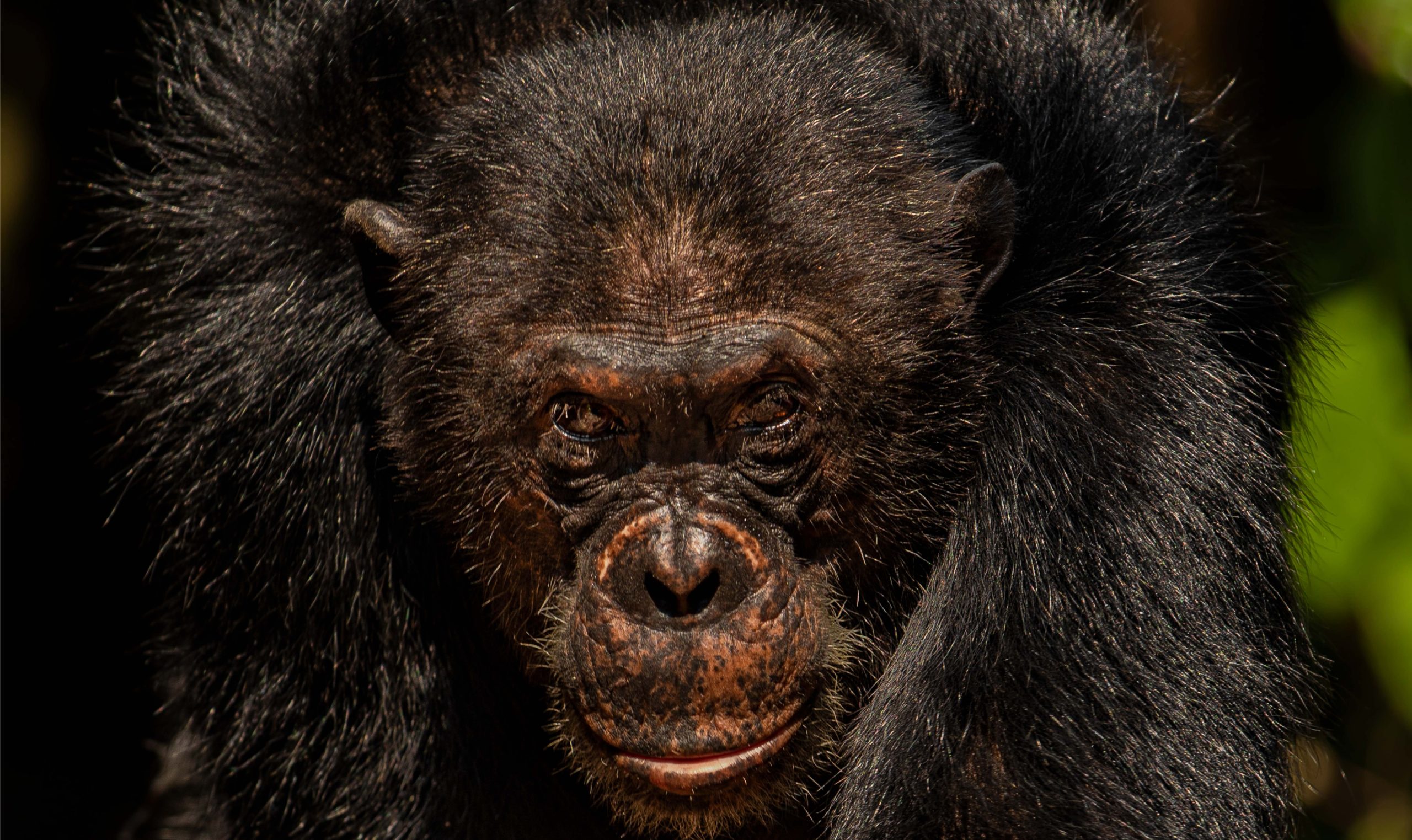
16 Jan Mahale Chimp Guardians
MAHALE CHIMP GUARDIANS
Parts of western Tanzania are the easternmost end of chimpanzees’ range in the world, home to the eastern chimpanzee Pan troglodytes schweinfurthii. On the forest trails of Mahale Mountains National Park, you will get within an earshot of man’s closest kin before you even get to see them. Their facial expressions are strikingly similar to those used by humans, as they convey different information about mood, status, danger, food, and various social interactions. Very similar to human beings, not only in terms of the skeletal structure and nervous system, but they also share some 97% of genetic code, closer to humans than gorillas.
Chimpanzees are the focal point of Mahale, however, they are not the only attraction as the park has a lot of natural variety to offer. A shoreline of crystal-clear waters of Lake Tanganyika is accompanied by a chain of rugged mountains extending for 50 kms, splitting Mahale into two unique natural habitats that harbour both forest dwellers and mammals of the eastern plains: the west evergreen forests that receive high annual rainfall and the eastern miombo savanna characterised by dry and wet seasons. The park is among the most diverse primate fauna in Tanzania, with a total of ten primate species ranging from the yellow baboon, vervet monkey, Angola colobus, blue monkey, red-tailed monkey and ashy red colobus, just to mention a few.
CHIMPANZEES COMMUNITY DYNAMICS
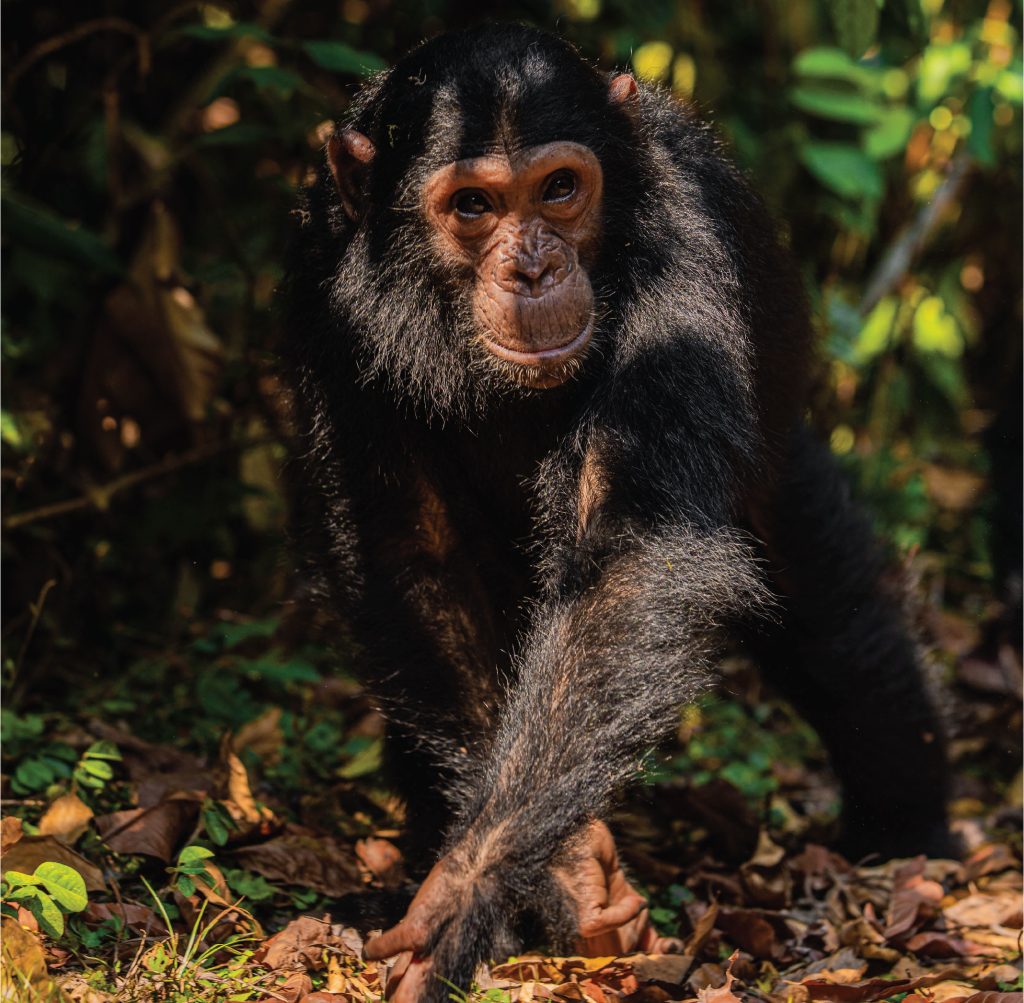
Figure 5: Baby chimps walking together side by side as they follow the adults from behind. Photo credit: Edger Msyani.
Chimpanzees live in extended communities of up to 100 strong that share a territory. Social bonds between unrelated females are very weak, whereas maternal bonds between males and mothers are strong.
Male chimpanzees remain within their traditional home range, spending their entire life within their birth community and defend it cooperatively against rival neighbours. Females regularly migrate to a neighbouring community after reaching adolescence.
In chimpanzee’s society, leadership is often more political, with the alpha male being more of the chairman of the board rather than a tyrant. Adult males are fiercely intolerant of their neighbouring groups and occasionally kill solitary individuals or small groups close to the community’s territorial boundary. Intra community warfare has been evident in Mahale as males would occasionally seize the moment when they know the neighbouring community males are smaller in size compared to them.
CHIMPANZEES FORAGING AND ADAPTATIONS
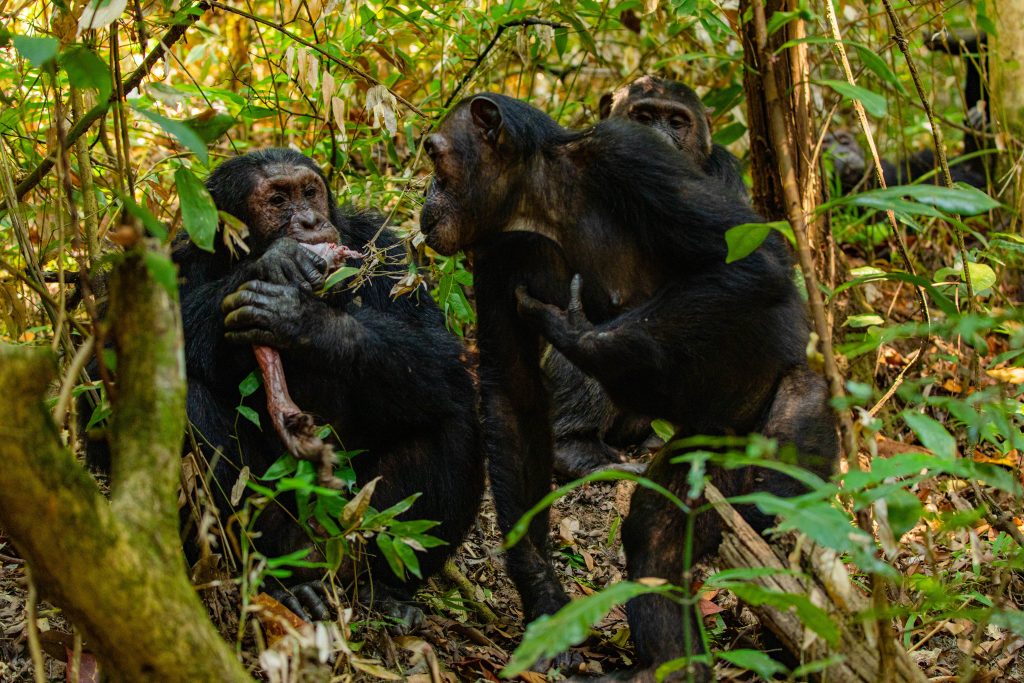
Figure 2: The chimpanzee on the right is humbly asking the chimpanzee on the left to share the meat. This is a form of communication. Photo credit: Edger Msyani.
Chimpanzees’ feeding behaviours and dietary preference are highly variable in relation to the seasons and individual populations. They show spectacular botanical expertise and detailed knowledge of their home range by knowing when and where to find fruiting and flowering trees. They spend 45% to 60% of the day foraging, with morning and late afternoon being the peak foraging hours. Chimpanzees are mostly herbivores, preferring mainly fruits but also feed on leaves, stems, vascular bundles, barks, flowers, seeds, and shoots.
Before the 1960s, chimpanzees were believed to be purely herbivorous, but the work of Jane Goodall in Gombe National Park and Japanese researchers in Mahale uncovered a non-vegetarian component to the diet of chimpanzees. Jane Goodall discovered that chimpanzees were not only omnivorous but opportunistic foragers. Insects like carpenter ants, birds’ eggs and nestlings make up their menu too. Additionally, they discovered how surprisingly creative chimpanzees were in fashioning tools when it came to foraging, and sourcing medicinal and recreational food sources.
Chimps are keen hunters, known to take down small mammals through an ambush strategy with each individual playing a specific role. There is a flasher that makes himself visible to the prey to create panic. The flasher drives the prey to the path of blockers that direct their prey in the ambush zone where the more experienced and fastest grabbers capture the prey by surprise. On a successful hunt, other chimps sit close and beg for a share to the one who made the kill and has undisputed rights to it.
NESTING
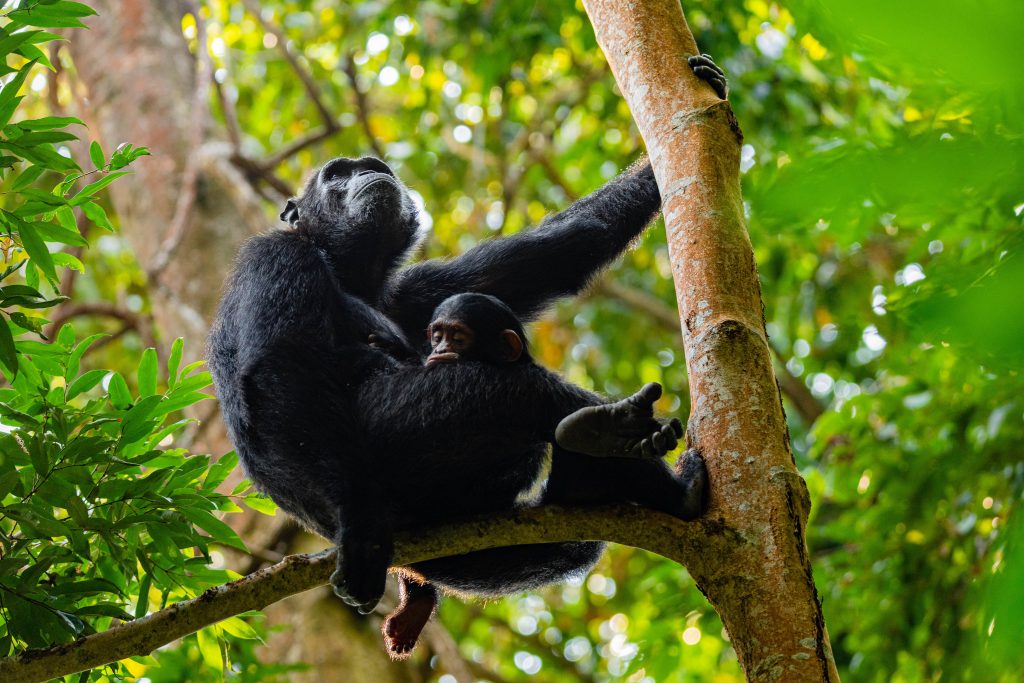
Figure 3: Mother chimp resting on top of a tree, with her baby napping on her lap. Photo credit: Edger Msyani.
Wherever the chimpanzees forage last is the ideal camp site for the night. They show some degree of perfection when constructing a nest, perhaps it is because juveniles begin practicing building nests very early, around 8 months old, and perfect their nest-building skills to the fullest between 2.5 to 5 years old. In one to five minutes a nest is crafted with top ingenuity, although it can not rival that of weaver birds. The chimp starts by choosing a perfect spot with crossing or crocheting branches as the foundation of the nest. Then smaller branches are broken or bent and woven over and under one another before adding leafy branches for padding and finally laying down comfortably after a long day.
UNIQUE BEHAVIOURS OF THE MAHALE CHIMPANZEES
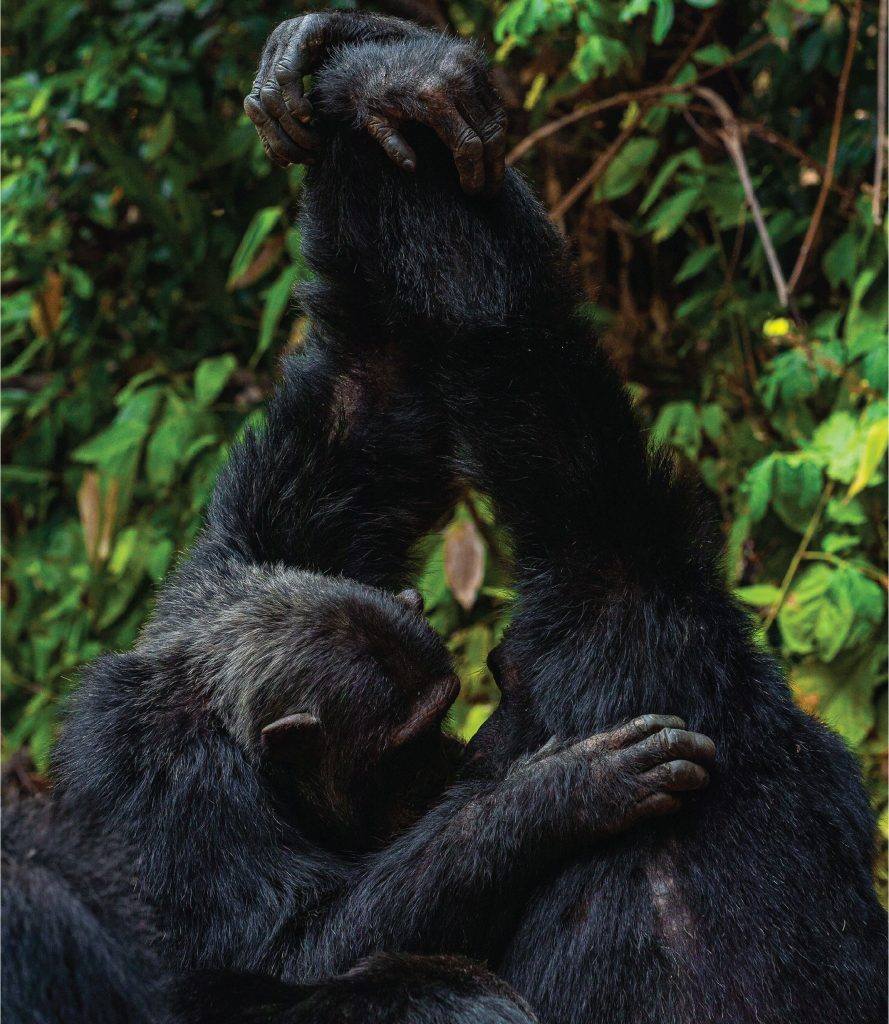
Figure 4: air which is aptly called “the high five”. Photo Credit: EdgeThese grooming chimps are displaying a unique behavior with the position of their hands, photo credit: Edger Msyani.
Chimpanzees’ behaviours have been researched and recorded over a decade, however, researchers are still unravelling secrets about the chimps’ behaviour. Behaviours change over time due to adaptations of new environments, habitat degradation, or climate change; but some behaviours are evolutionary. Evolution has shaped a recognizable speech for the chimpanzees, something that has only recently been observed.
The Mahale chimps also show a newly observed behaviour, known as “the high five”. This high five is a form of communication that mostly occurs during grooming and it is the first time that it has been visually recorded in Mahale Mountains National Park. Another interesting behaviour that was observed with the Mahale chimps is their tendency to display lip-smacking.
Lip-smacking is also a form of communication and has many functions within the chimpanzee community. It is a social behaviour that brings about friendly interactions amongst the chimps, it is also a sign of submission, affection or contentment, and a way to prolong grooming when grooming vulnerable parts of their body.
CHIMPANZEES AND THE COMMUNITY
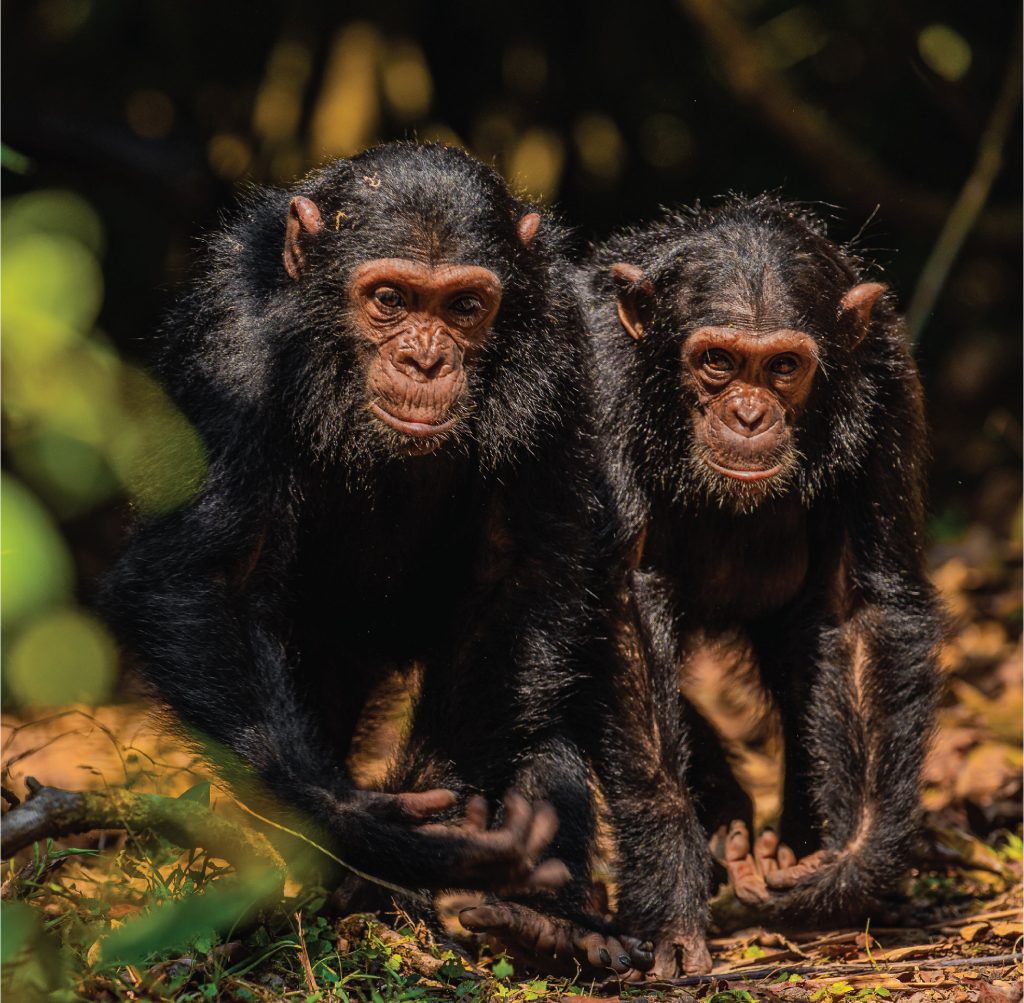
Figure 5: Baby chimps walking together side by side as they follow the adults from behind. Photo credit: Edger Msyani.
As part of ensuring chimps a healthy natural life, rules and guidelines had to be set when accessing them. A maximum viewing of one hour is set in place once a chimpanzee has been located, no person under the age of 12 is allowed, and no more than six individuals plus a qualified guide can get close to the chimpanzees at one particular time. Wearing a mask and not getting closer than 10 metres from the chimpanzees is a must, and a sick individual or one with an infectious disease is not allowed. These rules and guidelines might seem too strict, however diseases (specifically respiratory diseases) that might look harmless to humans, may be deadly and fatal to chimpanzees. The secret ingredient to Mahale chimpanzees’ prosperity can be traced years back, in the early days when the park was gazetted.
Between 1975-1980 the attempts to preserve Mahale sanctuary as a game reserve took place, and the Tongwe tribe were transferred to areas outside the park. After what was thought to be an unnecessarily long process of establishing park boundaries, in 1985, the park attained National Park status, and it was thanks to this lengthy process that Mahale is gifted with a transition zone outside the boundaries with no human settlements. Additionally, there is a wildlife corridor to Katavi National Park which adds to the diversity and health of the ecosystem. The local communities surrounding the Mahale National Park by far are more focused on small-scale fishing and its benefits, of which is not posing any kind of threat to the conservation of the chimpanzees.
Mahale is a great example of how nature and humans can live in harmony, respecting each other’s space and sustainably utilising their common grounds. A truly unique and treasured national park, one you have to see to truly appreciate.



No Comments